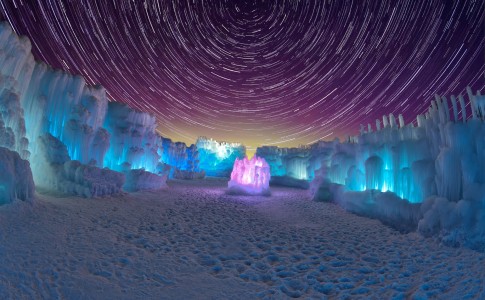Picture this: on a pleasant winter afternoon, you look towards the hillside and you watch as your child gently makes their way down a slope of glistening white snow. “Wow that was fun… let’s do it again!” As a professional ski instructor, I’m pleased when my students express excitement after their first ski lesson. To help prepare them for a productive lesson, it is important that they dress for success.
Like many athletic activities, having the right apparel and equipment makes a big difference towards a positive experience or not. When you think ‘snow’ sometimes ‘less is more.’ Think ‘quality’ not ‘quantity.’ You may recall as a child being bundled up by your parents, feeling like the “Pillsbury Dough Boy.” Sure you might have been warm, but it was certainly very cumbersome. Fortunately today, we have modern skiwear that protects against the weather and allows for greater mobility.
So what works and what doesn’t work?
Let’s start at the top, head to toe. A good ski helmet is preferable to a traditional knit cap. It provides insulation and protection for the head. Bicycle helmets are not good substitutes. A neck gator is preferable to a scarf, which can be awkward at times. Just as important, a good pair of goggles will also protect against the wind and the sun, far better than sunglasses might.
For the body, a good set of thermal underwear will provide basic insulation. On colder days, a light fleece pullover might also help. However a nice turtleneck will keep the wind out. Typically, two inner layers will suffice. A good ski parka will also provide some insulation as well as protection from the snow and wind. Most parkas will zip up to cover the face and some will also have a hood. At the sleeve, there may be zippers for ventilation and at the end, Velcro cuffs to cover the end of the gloves, keeping the snow out. A good pair of ski gloves might also have a Velcro strap. Ski mittens are preferable on colder days. They keep the fingers together and can accommodate ‘hand-warmers.’ Common hand-knit mittens are inadequate.
Ski pants will be similar in quality to the parka. They will likely have a pocket or two for some snack money and a loop where you can attach a ski pass. At the ends, the cuff will also have an adjustable Velcro strap as well as an elastic gator. Both of these go over the boot, not inside. Sometimes, skiers will come wearing cotton jeans. This is definitely something to avoid, because the minute the jeans become wet, they start to freeze.
Most first time skiers will rent their equipment. For convenience, it’s best to rent at the resort. In the event that the equipment does not fit properly or it needs an adjustment, the rental shop is close by. The equipment should include boots, skis and poles. When putting on the boots, only one thin pair of socks should be worn. The ski boot is designed with insulation and padding. Never tuck pants inside the boot as this could cause a sore. The boot should be buckled firmly, so that the boot is neither too tight nor too loose. This way the boot will fit properly and comfortably.
A little planning goes a long way.
By planning well ahead of the first lesson, you can be confident that your child will be warm and comfortable, especially if the weather turns blustery. Also plan enough time for travel to the resort. The drive time can double if traffic conditions worsen. To avoid a rush, it’s best to arrive at the rental shop least one hour before the start of the lesson. Public restrooms are available for your convenience, before arriving at the Ski School. You will also need time to purchase a ski pass and lesson ticket at the Ski School.
Relax!
You’ve finally made it to the school. There, the instructor will meet the students, get to know them and check their equipment before the lesson begins. Should your child come prepared, hopefully their first skiing experience will go well and they will have a new interest in the sport, worth a lifetime.
After all, happiness is learning how to ski.
What to have:
Ski Helmet and Goggles (preferable)
Good Thermal Underwear
Turtle Neck (Neck Gator optional)
Light Fleece or Wool Sweater
Real Ski Gloves (Hand warmers desirable)
Real Ski Parka and Ski Pants
Snack Money for Hot Chocolate
Time to Travel and Rent Equipment
Time to Visit the Restroom and Purchase Tickets
Things to forego:
Pass on the Bike Helmet and Sunglasses
Pass on the ‘Hand-Knit’ Mittens (inadequate)
Avoid wearing Cotton Blue Jeans for Pants
Avoid wearing a Cotton ‘Hoodie’ as a Jacket
Avoid wearing two and/or three pair of gym socks
And never tuck the pants inside the boots!





No comments